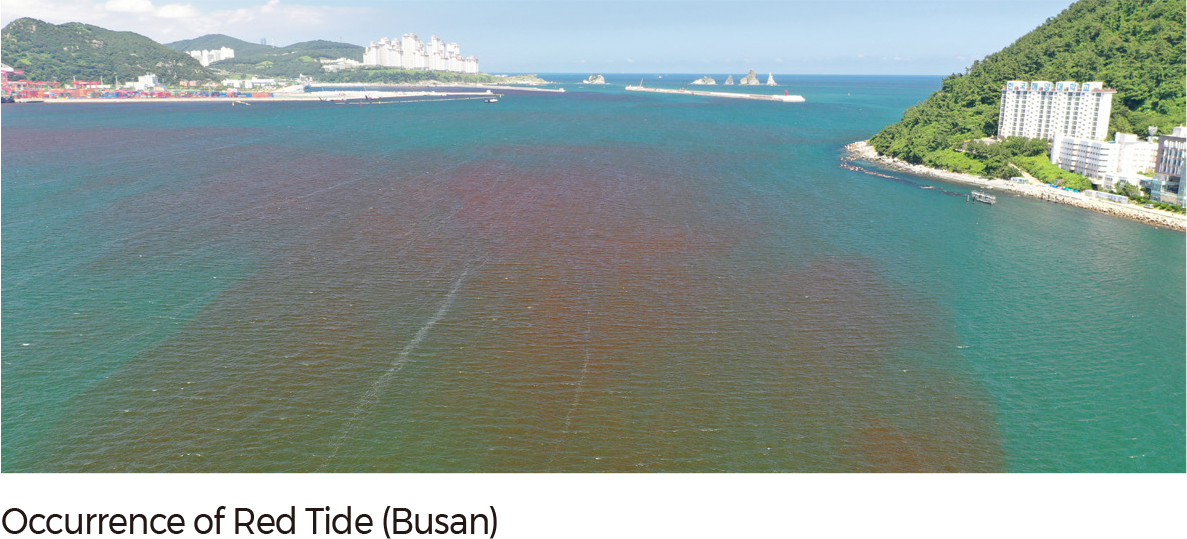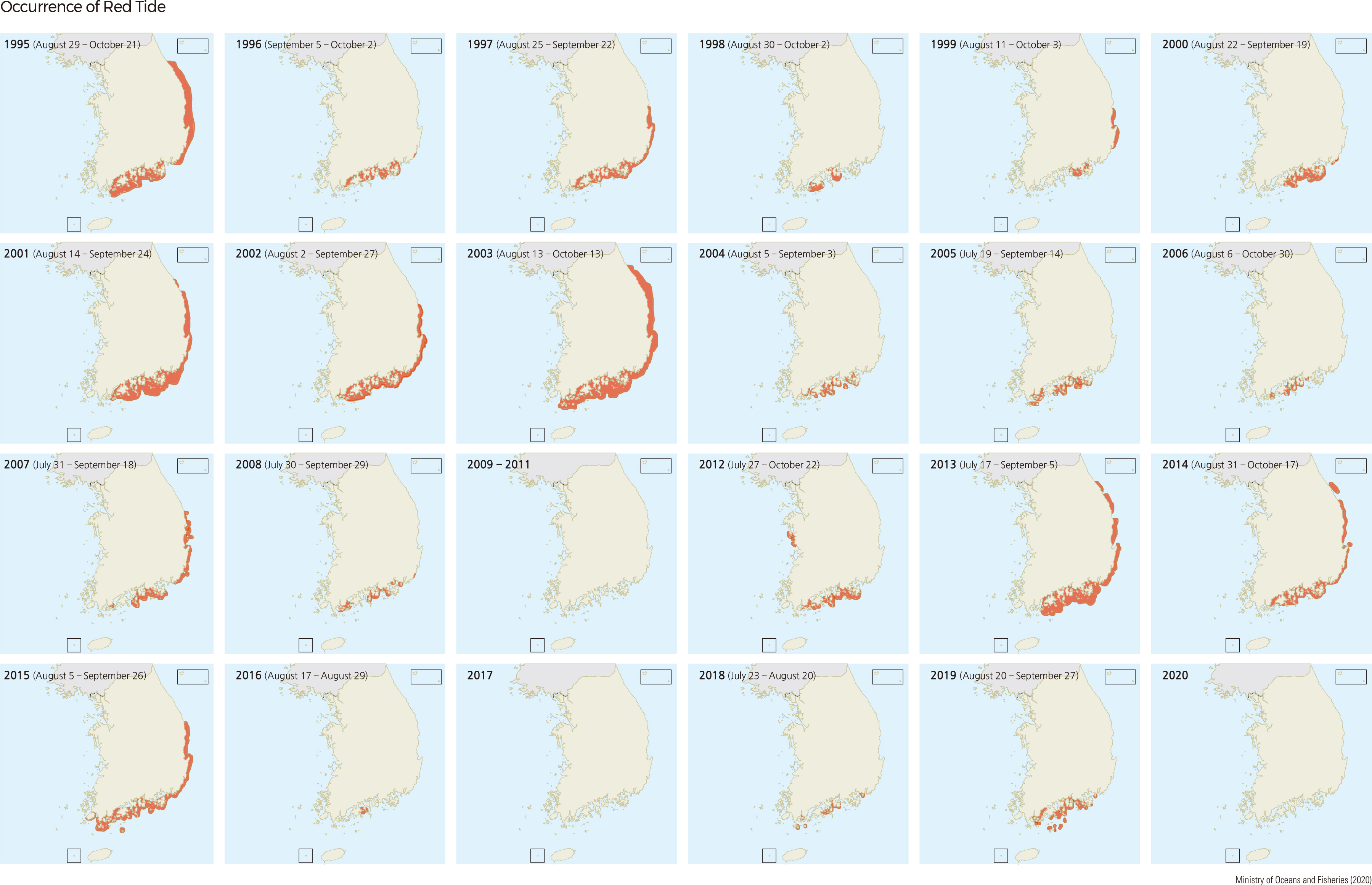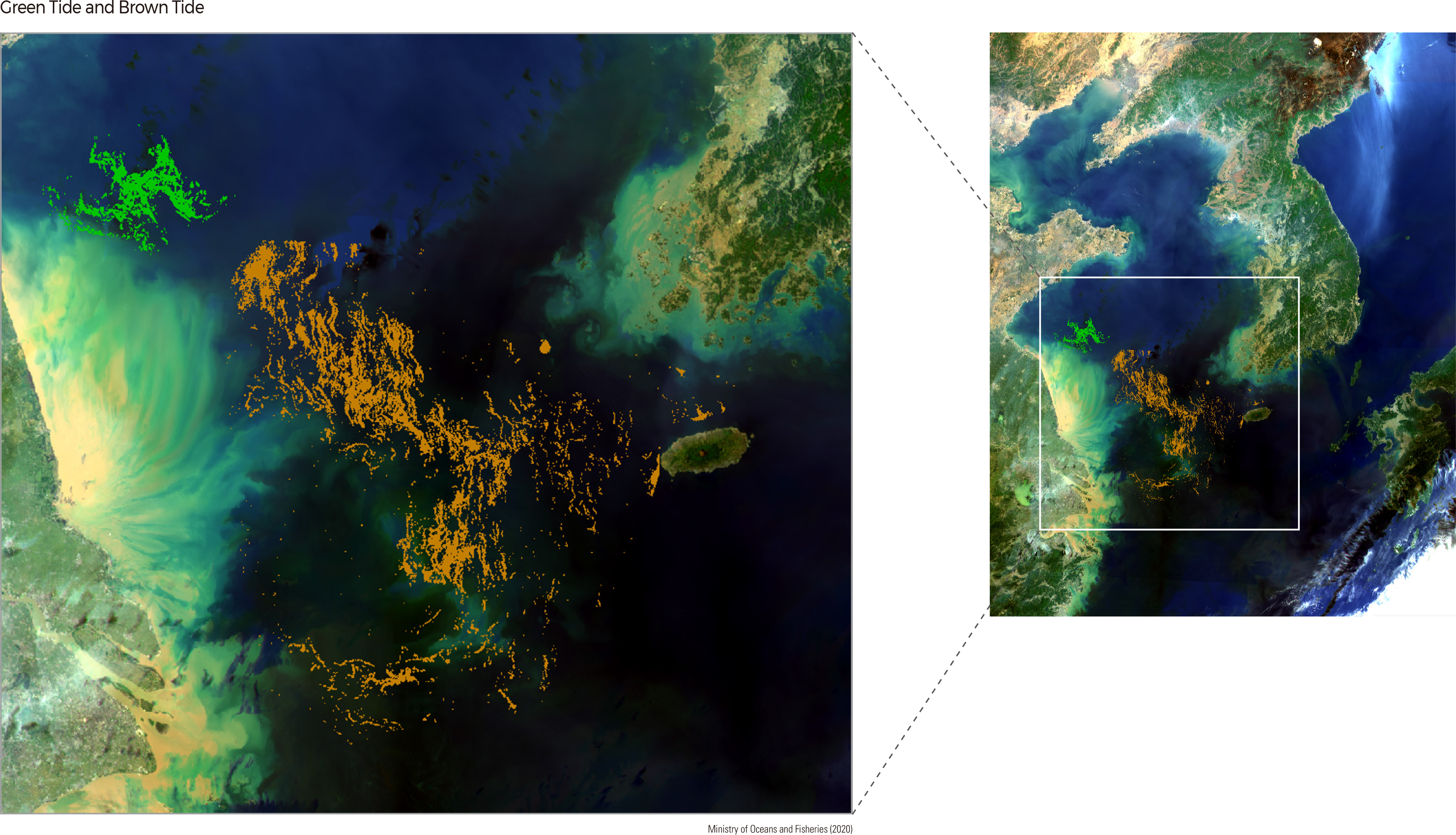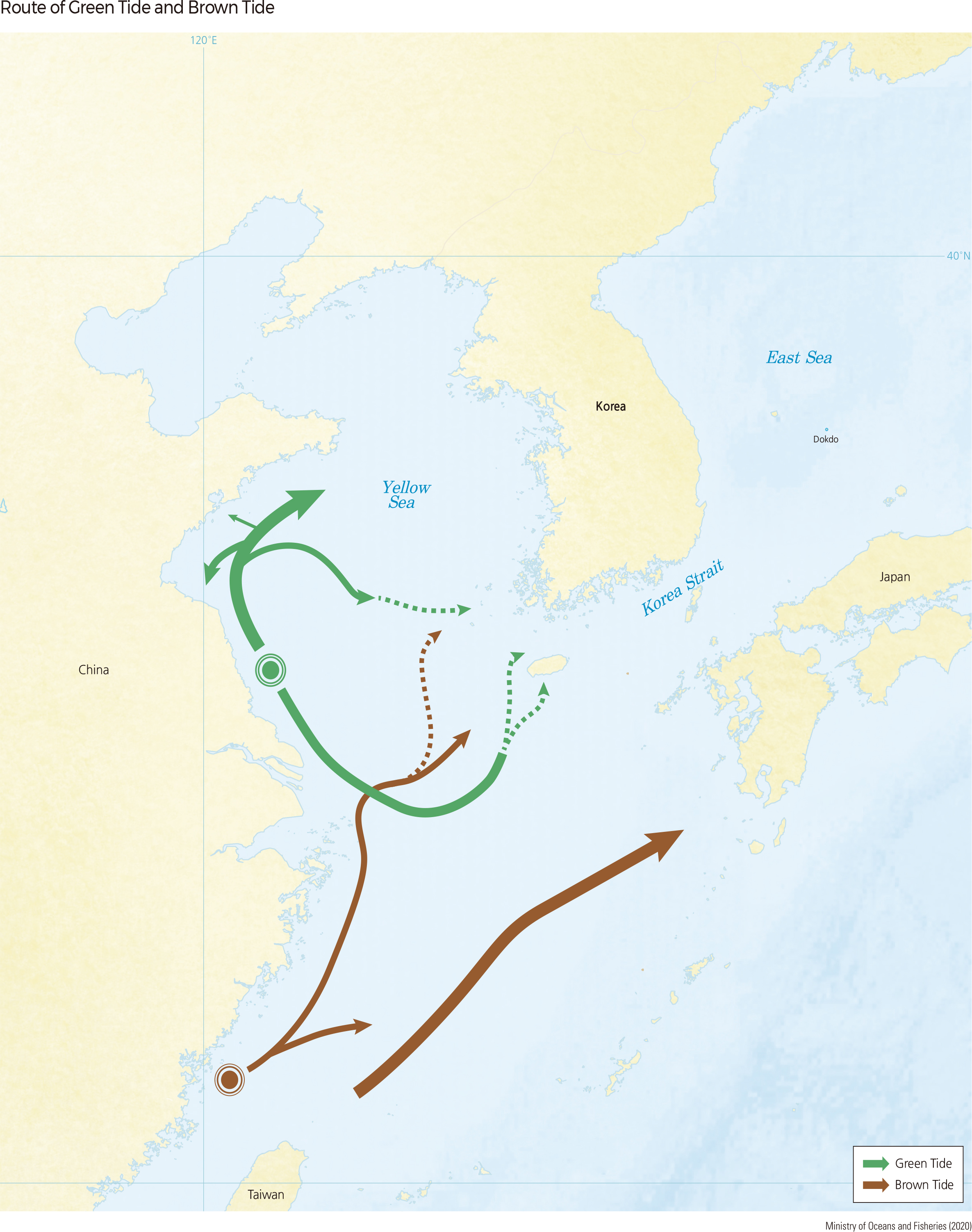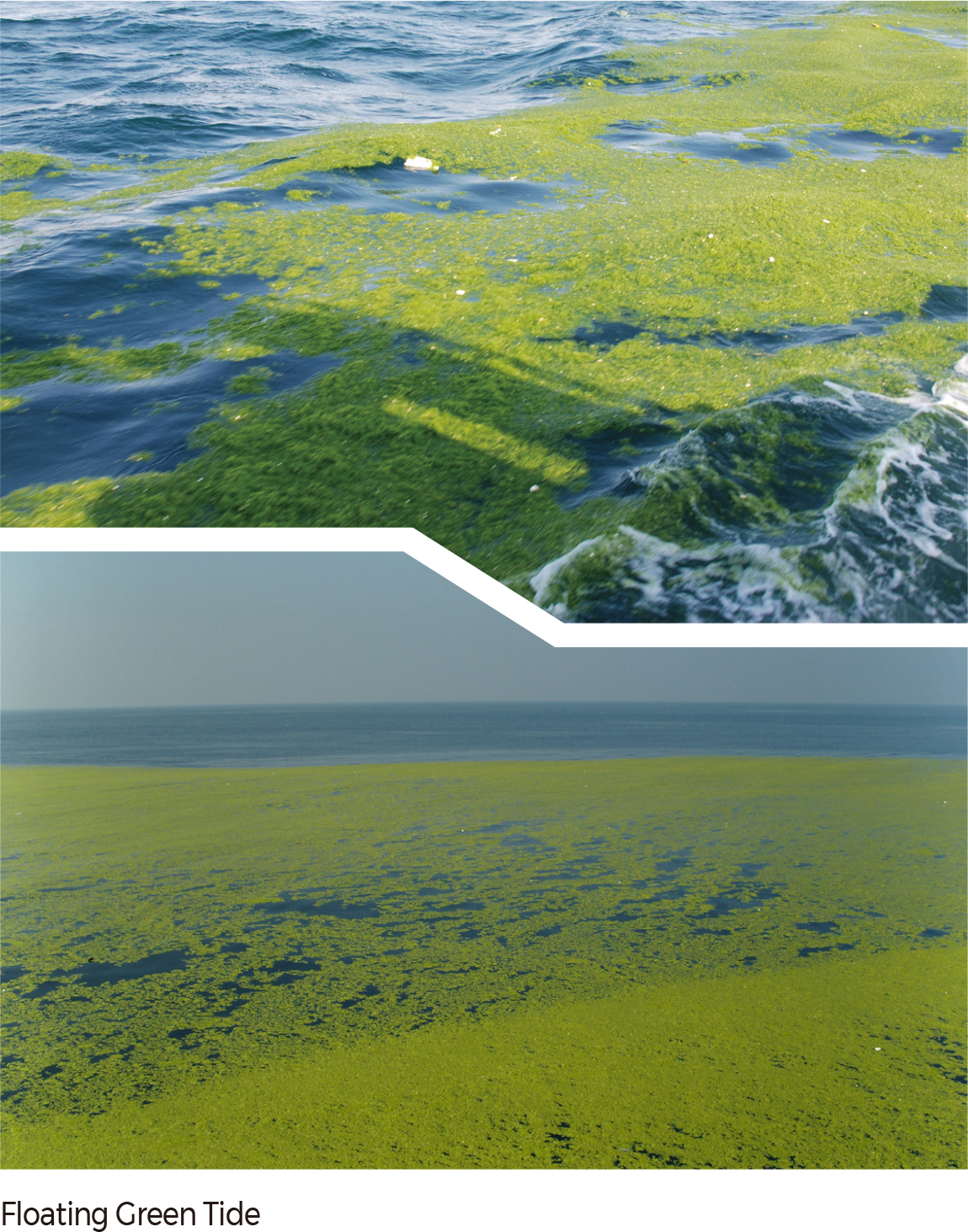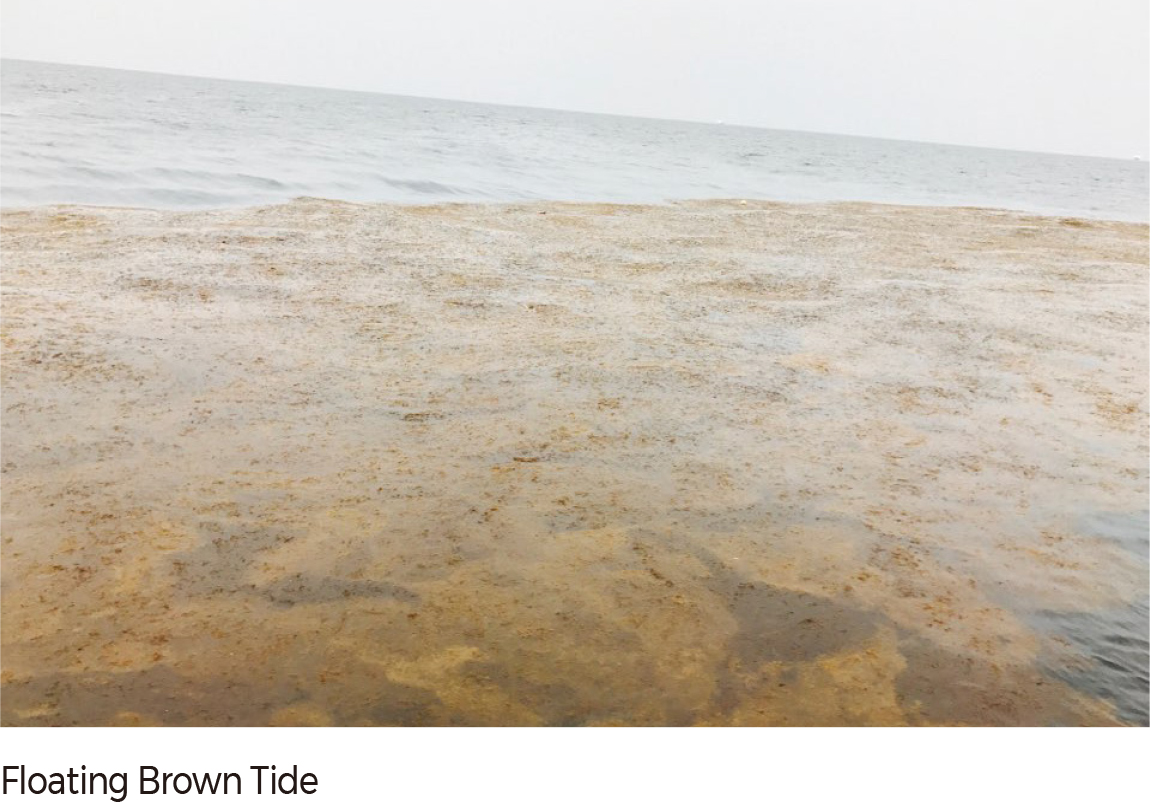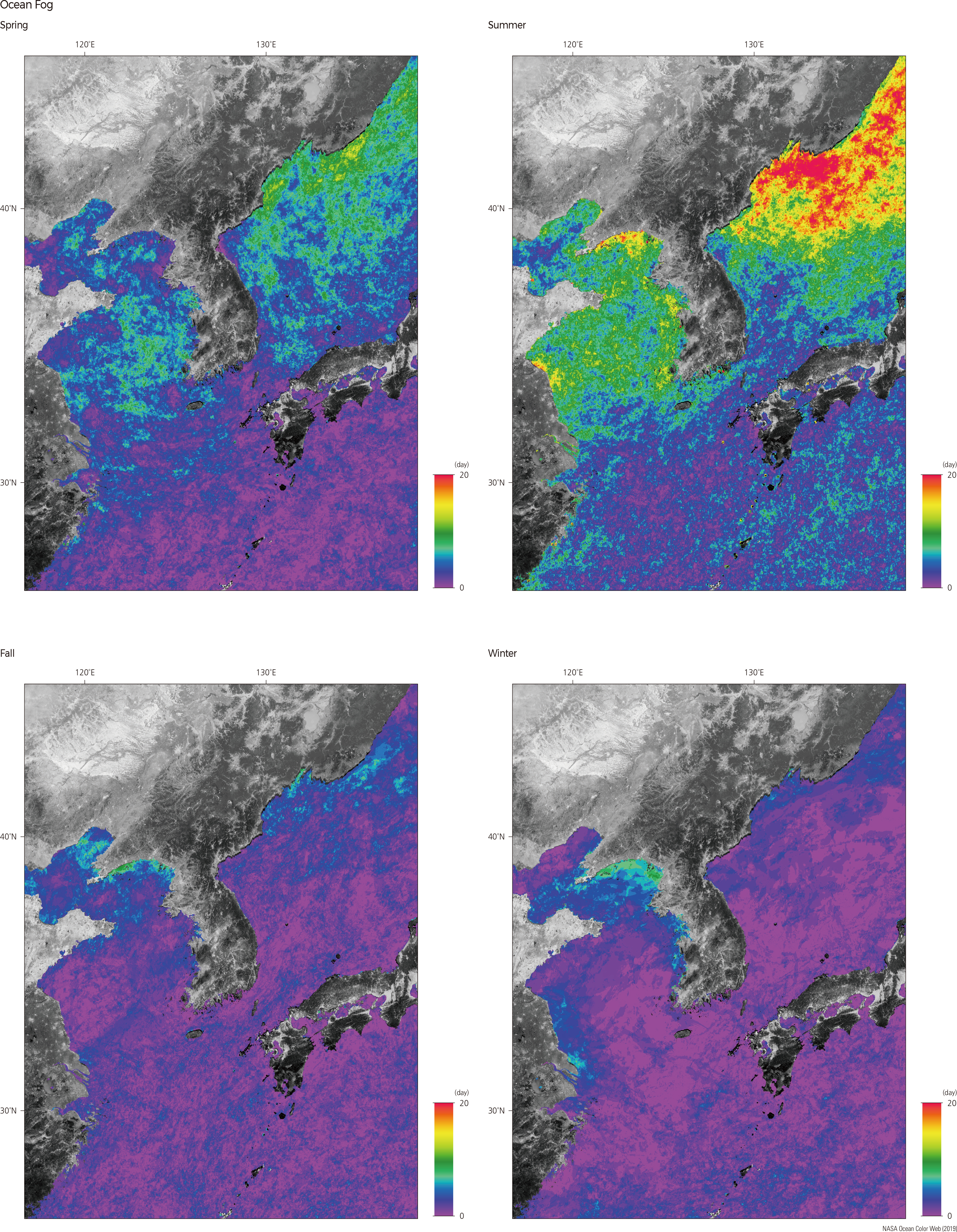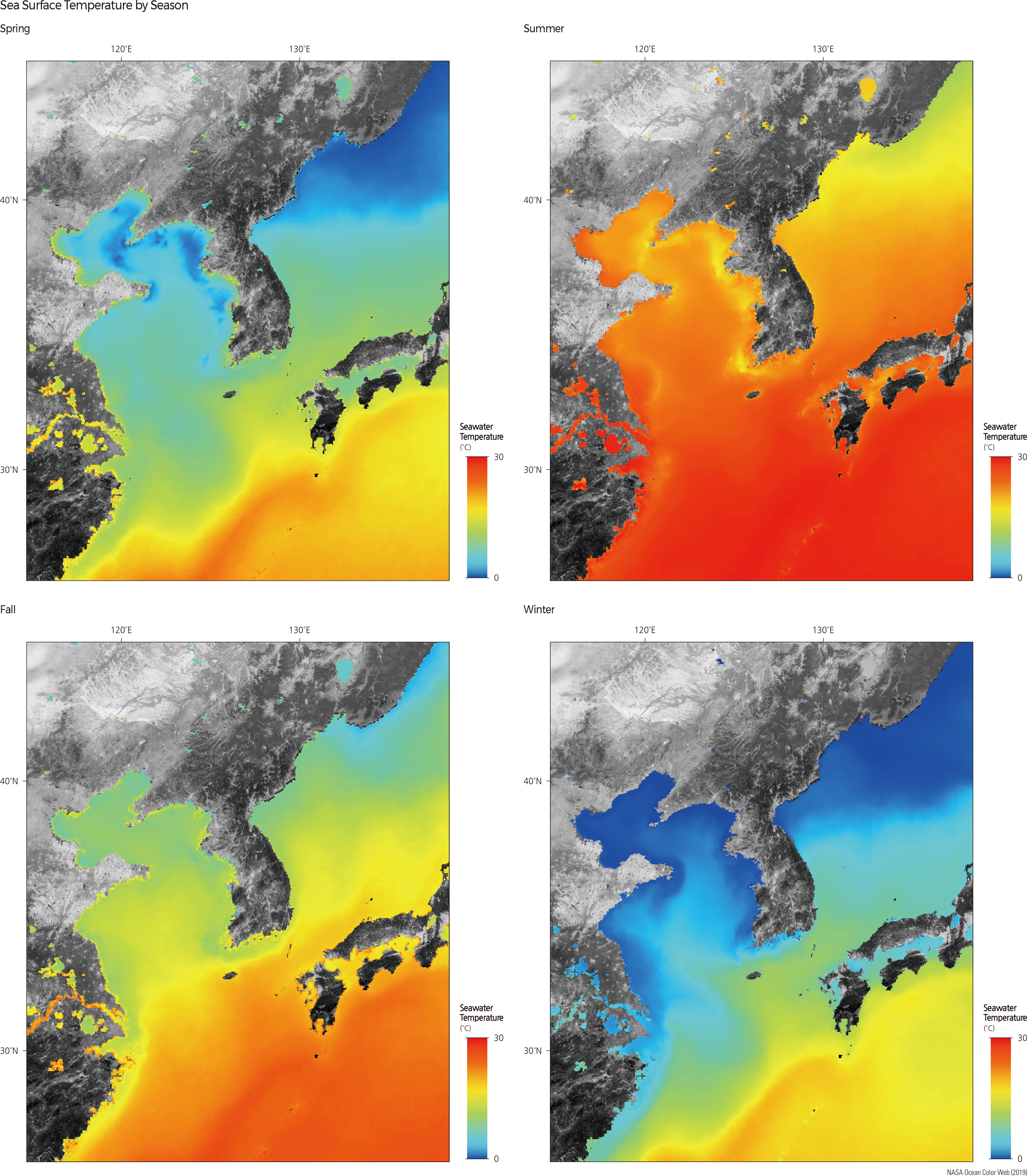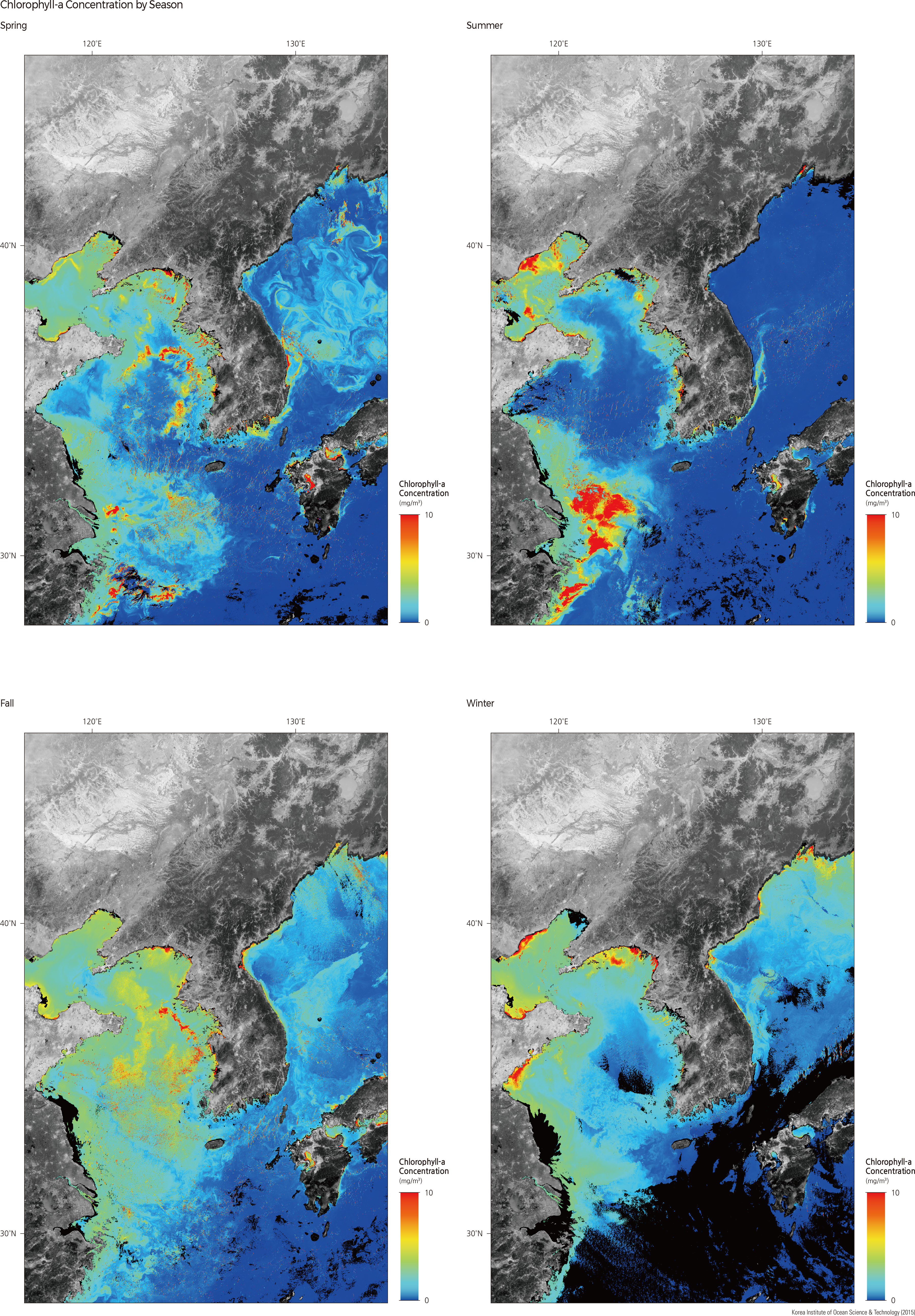English II 2020
Red tide refers to when seawater is discolored red due to a mass bloom of phytoplankton — mainly cyanobacteria, diatoms, and dinoflagellates — in the ocean. Depending on the species of plankton, the color of the water can show tinges of yellowish-brown, yellow, or grass green. Red tides cause great damage to marine ecosystems as they cause mass kills of coastal fish species worldwide.
While diatoms were widely responsible for red tides along the southern Korean coast in the early 1990s, Cochlodinium polykrikoides (a species of dinoflagellates) has primarily been the cause since 1995. Red tides from Cochlodinium polykrikoides blooms occur in the clear waters between Narodo and Namhaedo and spread throughout the South Sea of Korea. In some years, they spread to the west coast and the East Sea as well.
Green tide is a mass proliferation phenomenon of large green algae (seaweed) living on the coast. It is different from the phenomenon that causes the water to turn green due to the mass proliferation of Cyanobacteria occurring in rivers and streams.
The green tide is observed frequently along the coast. Since 2008, large-scale floating green tides have been observed continuously in the Yellow Sea and the East China Sea. Green tide usually grows attached to the shore until April-May. It travels to the open sea with currents and winds when it is separated from the shore by physical force. Since 2013, large-scale brown tides caused by floating Sargassum horneri have been observed mainly in the East China Sea from winter to spring. The distribution of Sargassum horneri is increasing every year.
Both Green tides and brown tides originating from the east coast of China float in the Yellow Sea and the East China Sea and flow to the coast of Korea. Although they are non-toxic, large amounts of green algae and brown algae introduced to the coast cause ecological disturbance and industrial damage.
Sea fog refers to fog occurring at sea and is defined as a phenomenon in which horizontal visibility observed from sea level or surface is less than 1 km. Common types of sea fog are advection fog (forms when air lying over a warm water surface is transported over a colder water surface) and radiation fog (forms due to the radiation cooling in the coastal region). In 2019, the seasonal distribution of sea fog in Korea was investigated using satellite images from the Geostationary Ocean Color Imager (GOCI) sensor of the Cheonrian Ocean Satellite. The frequency of sea fog in the Yellow Sea is much higher than in the East Sea. In the Yellow Sea, the frequency of sea fog is high in an open sea in spring and summer, but in the coastal area in winter. In particular, the frequency of sea fog in the Yellow Sea is high in summer. When the western north Pacific subtropical high builds, sea fog develops as the air becomes saturated since the ocean surface is cooler than the air above it due to the difference in the specific heat between water and air.
The greatest seasonal variation in the marine environment around Korea can be found in the temperature of seawater. Closely related to atmospheric temperature, seawater temperature has an average surface temperature of 5˚C in the winter and 20˚C in the summer. As seawater temperature has a specific heat that is much greater than that of the atmosphere, it has a smaller dynamic range.
Chlorophyll is a photosynthetic pigment in phytoplankton that serves as an indicator of the primary productivity of the ocean. For instance, high chlorophyll concentration indicates high primary productivity. Due to the large rivers of China and the Korean Peninsula, the Yellow Sea has an abundance of inorganic nutrients, which are the food source of phytoplankton. This causes the Yellow Sea to have higher chlorophyll concentrations than the East Sea or the South Sea. In particular, blooms—the mass breeding of phytoplankton—that occur in spring and autumn can sometimes lead to red tide. During the summer, the movement of deep seawater to the surface, or upwelling, occurs in the East Sea, causing high chlorophyll concentrations along some parts of the eastern coasts.
The absorption coefficient of dissolved organic matter (a CDOM) is obtained by analyzing the absorbance of colored dissolved organic matter (CDOM) in the sea. DOM breaks down into inorganic nutrients, which serve as food for phytoplankton. Consequently, red tide or greed tide can occur when DOM concentration is extremely high. DOM usually flows into the ocean through rivers on land, which explains why the Yellow Sea, the South Sea, and coastal areas of the China Sea have high DOM concentrations.
Suspended sediments have two sources: one is sediment runoff carried through rivers from the land to the ocean, and the other is suspended sediments pulled up from the ocean bottom due to waves or currents. As the greater portion of sediment is composed of sediment runoff, the coastal areas of the Yellow Sea, the South Sea, and China have an abundance of suspended sediments. The concentration of suspended sediments is mostly influenced by waves and wind and is generally highest during the winter.
Visibility is an index for measuring how deep light can penetrate into the sea. It is an intuitive indicator of seawater turbidity and clearly displays seasonal variation. The East Sea and the South Sea are characterized by relatively clear water with about 10 m of visibility in the summer. While the Yellow Sea has comparatively high visibility offshore in the open water, visibility in coastal regions is less than 8 m due to river discharge and the resuspension of bottom sediments. During the winter months, stronger waves and wind lower visibility in all the seas surrounding the Korean Peninsula. |


